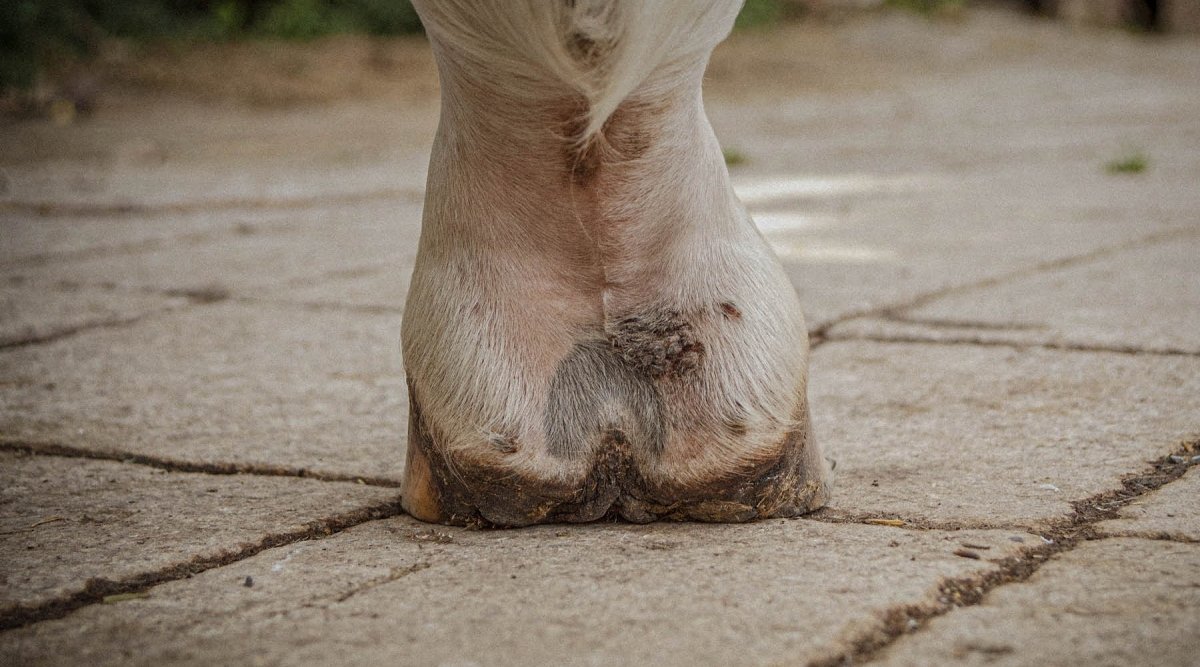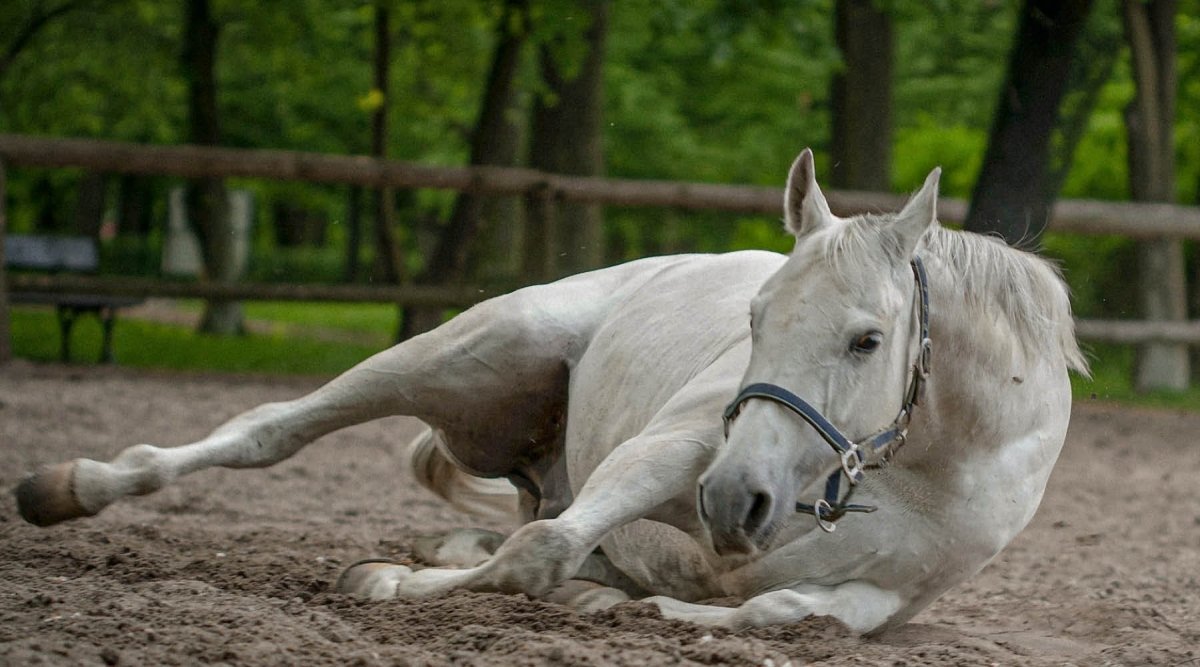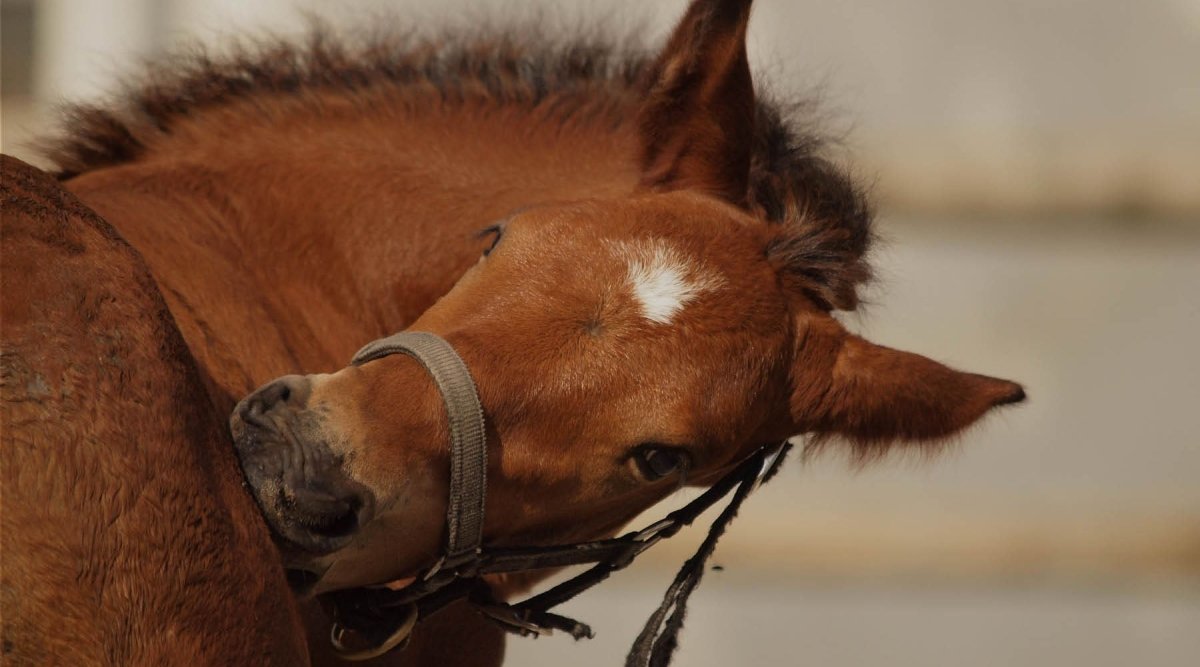What is mauke?
Mauke is an inflammatory skin disease that is also known as fleshy eczema, as the disease mainly occurs in the area between the fetlock head and the hoof.
Mauke in horses develops over a long period of time and is a bacterial skin inflammation. The skin barrier on the fetlock or hock is not stable and strong enough to ward off bacteria. These settle on the sensitive areas and attack the skin.
Autumn and winter are ideal for mauke
Mauke is a widespread problem in (immunocompromised) horses, especially in the fall and winter months. Wet weather is ideal for bacteria to multiply and damage the skin. However, rainy summers can also promote the development of mauke in horses.
Mauke is not contagious and is not a life-threatening disease. However, it has a major impact on the animal's well-being and can trigger secondary infections if the open areas are not treated early.
Recognizing mauke in horses
Mauke in horses in the early stages is difficult to recognize and the sores must first be sought out. The disease is usually associated with minor abrasions caused by training or other injuries. The infection is therefore rarely recognized and treated at an early stage.
Once the mauke has developed further, the affected areas become swollen and inflamed. Bald patches without fur, crust formation, even pus and wetness in the inflamed areas are signs of an advanced case of mastitis.
Important: treat scabs
The crusts are the main problem. This is because crusts are ideal for bacteria: They form a protective layer so that the parasites can multiply quickly underneath the crust. The crust can also expand and affect the entire leg
Itching, lameness, reluctance to move and loss of appetite can be the result. The horse also feels generally unwell because its vitality is restricted.
Causes of mauke
Mauke in horses is usually caused by permanent moisture on the hooves and legs. If the horse is kept in stables that are poorly cared for and damp, the risk of infection with moulting is very high. Parasites such as mites also have an easy time in these conditions and can infest the animals.
There are also other causes of moulting in horses.
Problems with the stables
- Little light in the stalls
- Cold and draughts
- damp stables
- Poorly mucked stalls
- Parasites in the horse boxes
- many sick animals
Problems with the horse
- long hangings on the legs, in which dirt and moisture accumulate
- lack of care
- weak immune system
- generally poor state of health
- overloaded metabolism / lack of detoxification
- stress
- allergies
- mites and fungal infections
- Rat bites on the fetlock bends
- Vitamin or mineral deficiency
- Diet rich in protein and starch
- Lack of exercise
Correctly preventing and treating moulting in horses
You can support the treatment of mud fever in your horse with various measures, but you can also prevent it at an early stage.
Avoid moisture
Moisture isthe biggest problem when it comes to the development and spread of mastitis. Therefore, make sure to avoid damp meadows and stables as well as wet straw. This greatly limits the spread of the bacteria. In dry areas, the bacteria are much less able to multiply and dry out. Dry straw and hay provide a dry environment and absorb the moisture. However, the soaked straw and hay must be replaced regularly.
Reduce protein, sugar and starch
Protein, sugar and starch promote the spread of the infection and can even contribute to its outbreak. A diet high in protein, sugar and starch encourages the spread of bacteria and mites and is also not ideal for the immune system. You can feed more hay instead of protein-rich feed.
Supplement minerals and vitamins
An undersupply of micronutrients, especially zinc and vitamin B, contributes to a weakening of the immune system and has a negative effect on the skin and coat metabolism. This weakens the skin barrier, which can no longer offer resistance to bacteria and other microorganisms. To boost the vitamin B balance, you can feed your horse brewer's yeast. Brewer's yeast is a proven supplier of vitamin B and a purely natural supplement.
Regular exercise
To prevent swollen mauke legs in your horse, you should exercise the animal regularly. This gets the blood circulation going and promotes the animal's vitality and well-being. In addition, your horse will be distracted from the stresses and strains caused by the mauke.
Mauke prevention at a glance:
- Protein, sugar and starch-reduced food / no grain, no bread
- Avoid concentrated feed and cereal-based treats during the moulting period
- Shorter grazing times to reduce protein intake
- No silage or haylage
- Avoid fertilizers in the pasture and pesticides in the hay
- Do not feed synthetic mineral feed
- Use natural feed supplements
- Feed zinc and vitamin B to strengthen the skin barrier
- Omega-3 fatty acids are essential for the cell membrane and support the skin, coat and bones
- Natural herbal treatment with nettles to support the detoxification organs
Caring for sores caused by mauke
If you have discovered sores on your horse, you should clean and disinfect them thoroughly. This will remove impurities and make the bacteria strains feel uncomfortable.
If your pet already has crusts on the areas, you can soften them a little with an antibacterial spray to clean off any impurities. You can also use a mild disinfectant soap, which is gentle on irritated skin.
Try to avoid water on the skin so that the skin barrier becomes dry and firm. Then treat with an antibacterial ointment or tincture of iodine; a zinc ointment is also a good way to close the sore areas of mauke.




